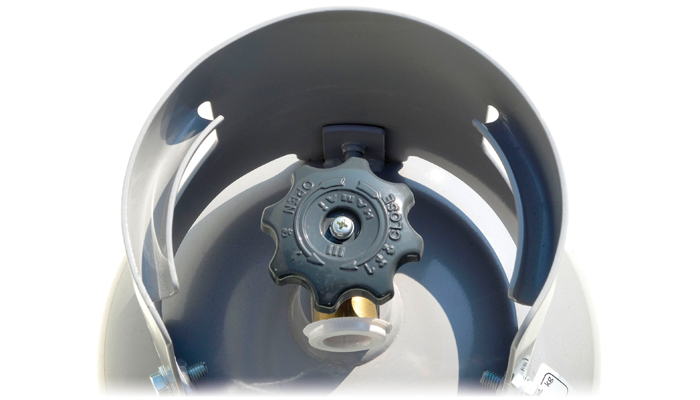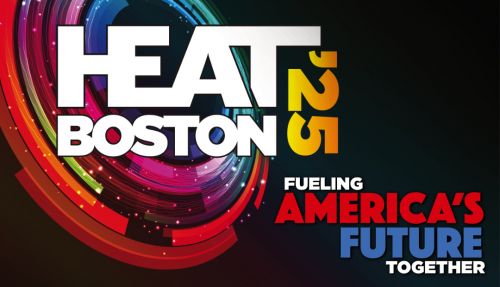All
PERC Revises Gas Check Program

The Propane Education & Research Council (PERC) recently completed a revision to the Gas Check safety program to better support dealers in protecting customers and managing risks.
Gas Check is a PERC program that provides the propane industry with voluntary guidelines for conducting residential and small commercial safety inspections. The guidelines offer two types of inspections, depending upon a company’s Gas Check inspection policies. One is the “Gas System” Check, which can be completed on the gas delivery system, including the containers, regulators, and appurtenances. The other is the “Gas Appliance System Check.” which can be completed on both the gas delivery system and all propane-burning appliances.
In a recent interview with Oil & Energy, Stuart Flatow, PERC’s Vice President of Safety and Training, explained the revisions to Gas Check. The National Propane Gas Association (NPGA) launched Gas Check in 1985 as an industry effort to reduce accidents involving propane through mandatory inspections. PERC purchased the program from NPGA in 2007 and redefined it as a voluntary set of guidelines that propane companies could use to support their own practices and procedures.
PERC has insisted on defining both what Gas Check is and what it isn’t (mandatory), in part to disarm plaintiffs’ attorneys who might try to use the program against marketers and installers during litigation. The only inspections that are required by code are for specific situations, such as new installations and interruptions of service.
PERC created the two different inspection types because some marketers offer delivery only and are not involved with the interior of customer premises. The Gas System Check provides guidelines for inspections that occur entirely outside of buildings.
Meeting Marketers’ Needs
As PERC looked to revise Gas Check in 2014, the focus was on meeting marketers’ needs. PERC heard from state associations and marketers that technicians were having trouble filling out the forms accurately and completely. Inadequate documentation could defeat the purpose of the inspections and create opportunities for plaintiffs’ attorneys to question the efficacy of the inspections and whether customers were properly informed about an inspector’s findings, according to Flatow.
One important change in Gas Check is a switch from three forms to two forms. PERC had previously included one form for each inspection type, plus a third form for customer acknowledgement. In the new Gas Check, the customer acknowledgement section is included within the inspection forms themselves.
Flatow said the customer acknowledgement is important, because the customer is acknowledging that they understand what the technician has told them. It also protects the company in the event of a lawsuit, because it confirms that the company performed the inspection and provided the customer with safety information.
“This Gas Check program is cultivating a set of guidelines and is not codified,” Flatow said. “We have had many plaintiffs try to suggest that this is a code, but it is merely a voluntary set of guidelines that you can use as is or within your own company procedures.”
Focus on the Inspection
Marketers who order the new Gas Check materials receive a booklet that explains the recording of inspection information. PERC also provides video instructions that are included both on a DVD and a USB drive that ship with the packet.
In developing the training materials, PERC focused on the inspectors and technicians that perform the inspections and tried to provide useful guidelines for company inspection forms and helpful instructions on using the forms. The training materials also explore some of the different results technicians might encounter depending on the equipment they are inspecting.
Flatow said the videos are intended to support companies with employee education, and specifically to help them understand how to document an inspection in a way that can be repeated consistently from technician to technician and inspection to inspection. “We really homed in on making the forms easier to fill out,” Flatow said.
The PERC training does not replace company Gas Check training, which should focus on the company’s own procedures and policies. “In the Gas Check booklet and throughout our outreach we stress that just going through this Gas Check information does not make someone qualified to do this kind of a program,” Flatow said. “They may need to go through CETP (Certified Employee Training Program) training on these topics. Whether they have to be CETP-certified will depend on company policy and whether their state requires it.”
“We hope marketers use the videos we are providing, which are propane-centric,” Flatow added. “They will see themselves in these videos. A lot of technicians or drivers may have thought they were the only ones struggling with the paperwork, and this will put them on a level field. This is a difficult and important job they have to do, and we want to make sure they have the tools they need, through CETP and other training programs to promote safety and help customers enjoy their comfort. We want customers to count on their propane marketers.”
The new Gas Check kit is priced at $19.50 is available for purchase online at www.propanemarc.com.
Related Posts
 Why Quality Matters in Your Biofuel Blends
Why Quality Matters in Your Biofuel Blends
Posted on June 25, 2025
 HEAT Show Gears Up
HEAT Show Gears Up
Posted on June 25, 2025
 What’s Next in Boiler Technology
What’s Next in Boiler Technology
Posted on June 25, 2025
 How Intelligent Are Your Integrated Customer Platforms?
How Intelligent Are Your Integrated Customer Platforms?
Posted on June 25, 2025
Enter your email to receive important news and article updates.
